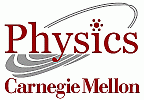 Molecular Beam Epitaxy
Molecular Beam Epitaxy Molecular Beam Epitaxy
Molecular Beam EpitaxyAt CMU, the research group of Prof. Feenstra in collaboration with Prof. Greve of the Electrical and Computer Engineering Department has developed a molecular beam epitaxy (MBE) system for the growth of GaN films. Studies will focus on the atomic-scale structures formed during growth on SiC, including the initial stage of heteroepitaxy, strain relaxation, and development of thick GaN films. This project began in Jan, 1996, and as of Nov, 1996 the MBE system system was fully assembled and growth experiments were underway.
The system consists of two parts: an L-shaped analysis chamber with 10 inch diameter, and a spherical growth chamber with 14 inch diameter. The growth chamber uses solid sources for Al, Ga, Mg, and Si deposition, and a gaseous rf-plasma source for N atoms.
Two separate types of sample mounting schemes have been used. In the first, resistive heating of SiC substrates will be used. This will enable STM imaging on hot substrates, and, in principle, operation of the STM inside the growth chamber during deposition of the GaN. The second scheme uses more conventional moly-blocks with bayonet-type mounts. The sample blocks are held on a manipulator with integral heater during the growth. Two-axis rotation is possible with the manipulator, to allow sample transfer and also for reflection high-energy electron diffraction (RHEED) characterization during the growth.
The analysis chamber contains various methods for characterizing the films, including low-energy electron diffraction (LEED), scanning tunneling microscopy (STM) and atomic force microscopy (AFM) for structural characterization, and x-ray photoemission (XPS) and Auger spectroscopy for chemical characterization.
The tunneling microscope is in-house designed and constructed. It employs a double-stage spring suspension system. The coarse approach mechanism for the STM is constructed using Inchworm piezoelectric motors (Burleigh Corp.). Also, the piezoelectric tube scanner and tip mounting apparatus is obtained from Park Scientific, and will function in both a tunneling mode and a force mode, with the latter using the piezoresistive cantilevers for measuring tip deflection.